

| The Rottenburys | Click photo to enlarge |
| The popular fishing
village of Beer has a long history, starting with the original Viking
settlement. The Romans knew Beer and used its fine stone quarries which
have existed, for almost 2000 years and have been worked. continuously
throughout Saxon and Norman times. Another industry which flourished was
the making of gunflints for the Army and Navy. The monks of Newenham and
Sherborne Abbeys used the south sloping fields for growing grapes. Later
Beer formed part of the dowry of Catherine Parr, the last wife of King
Henry VIII, and it was then sold to the Starre and Walrond families. A
number of Flemish Huguenot refugees settled in the village in the 1300' s
and introduced the famous Beer lace which is still made today. Queen
Victoria' s wedding dress was made here in 1839. A Spanish ship was
wrecked in the bay in the early 17th century and the crew settled in the
village, marrying the local girls. Beer was also the home of several
artists in the 1800's. The Walronds owned the manor and lived at Bovey
House, a fine old Tudor mansion situated a mile outside the village. The
last of the family married Lord Rolle and she had the Almshouses and
School "built in 1820. The old Beer luggers with their red sails were
crewed by firstclass seamen who had sailed the seven seas. The fishing
village has produced more sea captains than any other place for its size
in the whole of Britain. In the past: the villagers were much involved, in
smuggling, the most famous being Jack Rattenbury, born in Beer in 1778,
and known as the "Rob Roy of the West."
JACK RATTENBURY - "The Rob Roy of the West" 1778 -
1844 His book "Memoirs of a Smuggler" was published in 1837. He had an intimate knowledge of the English coast from Portsmouth to Falmouth and regularly conveyed contraband from the Channel Islands and Cherbourg. He experienced many escapades and was imprisoned numerous times. There is no doubt he was a remarkable man, surviving various privateering ventures, impressment into the Royal Navy, gaol, shipwreck and storm. Roy Chapple |
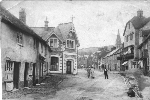
Beer at the end of the 19th century. 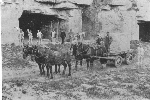
Beer Quarries 1901. 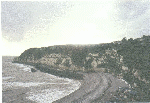
Beer beach and chalk cliffs. 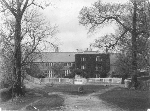
Bovey House, Beer, early 20th century. 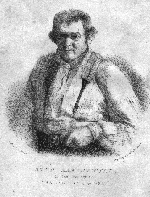
Jack Rattenbury. |
